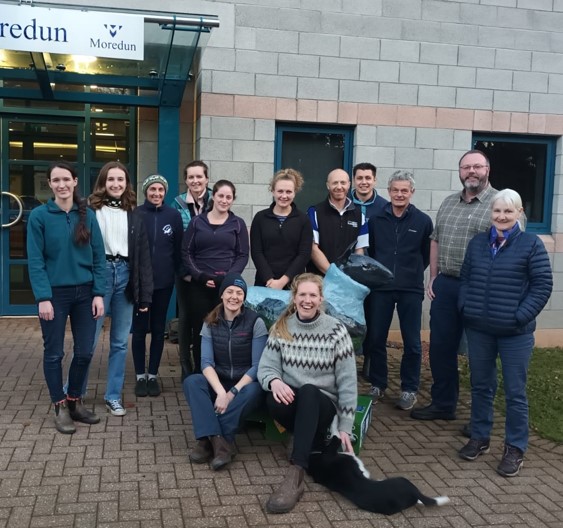A new project funded by the Scottish Government aims to train and develop a task force of elite vets to recognise ovine pulmonary adenocarcinoma (OPA) in sheep through ultrasound scanning.
A Scottish Government OPA working group, consisting of vets, scientists, policymakers, and farmers, have developed a draft strategy for control of OPA. Moredun have secured funding from the Scottish Government to lead a pilot project to address issues raised by the industry.
OPA is an infectious lung tumour of sheep caused by Jaagsiekte Sheep Retrovirus (JSRV) causing weight loss and increasing severity of respiratory signs over several months. The disease is invariably fatal and has serious welfare implications during the latter stages. Sudden death caused by secondary bacterial infection is not uncommon. The disease is clearly of concern to flock owners and the number of cases appears to be increasing. However, there is still no robust estimate of the prevalence of OPA in Scotland.
Ultrasound scanning has been shown to be a useful tool in the control of OPA, but currently, there is a shortage of vets competent and confident in this procedure. The project aims to develop a team of vets from across Scotland with validated expertise in the control of OPA. To this end, thirteen veterinary practitioners from across Scotland have signed up for a training and research programme run by Chris Cousens (Moredun) and Phil Scott FRCVS (Capital Veterinary Services). Some of these vets already have considerable expertise in ultrasound screening for OPA, whilst some are relatively new to using this technique. All aim to become part of an elite OPA task force.
So far, the vets have completed the first training and assessment event at Moredun and a nearby farm. The vets will then work with their clients who are employing them for whole flock screening for OPA. In addition to further training opportunities, the vets will benefit from access to expert second opinions for the interpretation of ultrasound recordings. They will also submit lung samples from some of the scanned sheep for diagnostic confirmation which will provide independent validation of the vet’s scanning results.
OPA-affected flocks participating in this study are expected to see a marked reduction in annual OPA incidence over the two years study and beyond, whilst those not affected by OPA should benefit from two years of evidence supporting a low-risk OPA status.
To maximise the outputs of the funding, Moredun are collecting additional information about OPA and the performance of flocks before, during and after the implementation of OPA control measures to assess how this could increase farm efficiency and reduce greenhouse gas emissions. A further part of the study will assess whether a simple blood test would be a useful adjunct to increase the specificity of ultrasound scanning for OPA.
This new pilot study complements other research at Moredun aimed at gaining a better understanding of the transmission of JSRV and the development of OPA. This knowledge will also help to deliver practical solutions applicable to real life sheep farming.
For more information, contact Chris Cousens: Chris.Cousens@moredun.ac.uk

